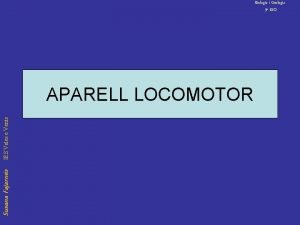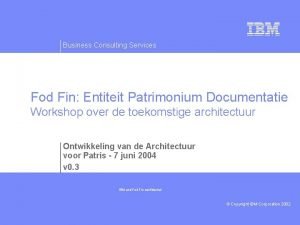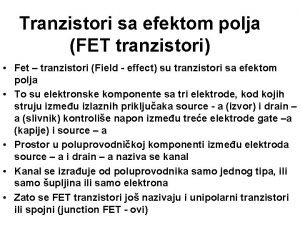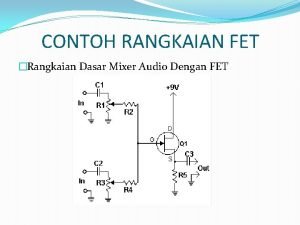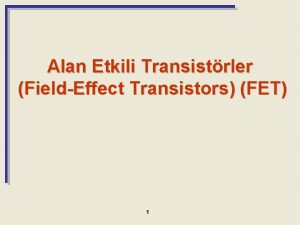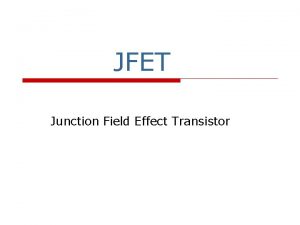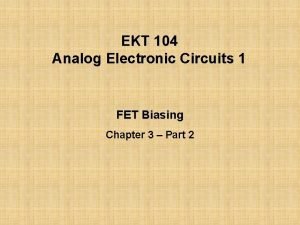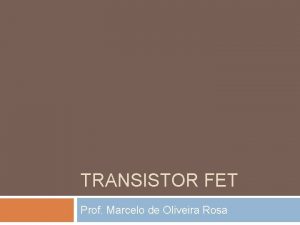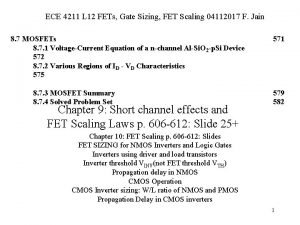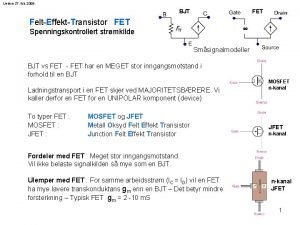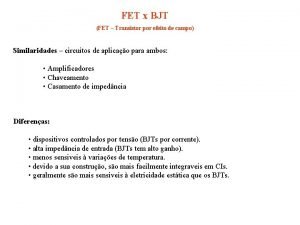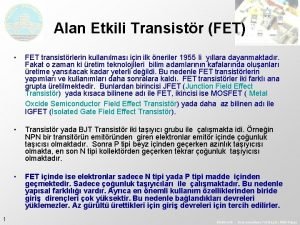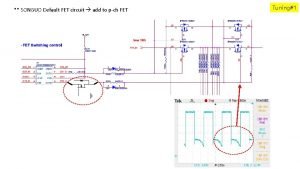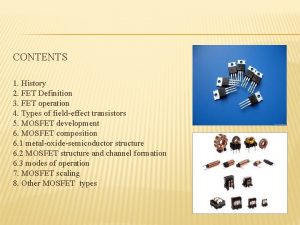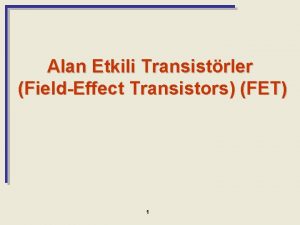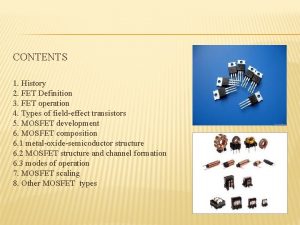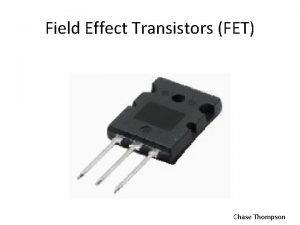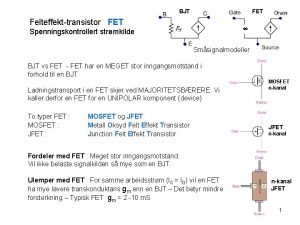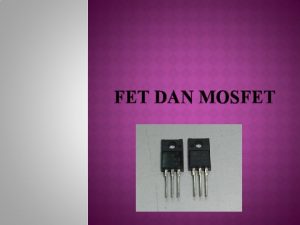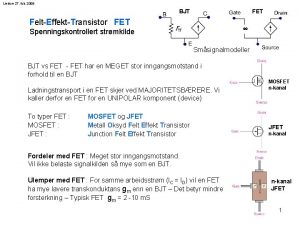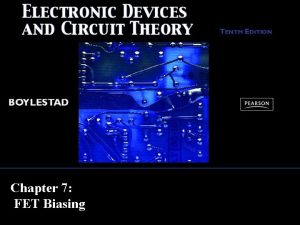A Comparison of FET Devices Fin FETs vs






















- Slides: 22

A Comparison of FET Devices: Fin. FETs vs. Traditional CMOS Walive Pathiranage Manula Randhika Pathirana, Matthew Ridder, and Luis Lopez Ruiz University of Virginia, Dept. of Electrical Engineering Dec 11, 2015

MOSFET and Fin. FET Structure • 2 D structure • Conducting channel only on the surface. • As the channel decreases, the control over the device is reduced. • • 3 D structure Conducting channel on 3 sides. Very little leakage. High potential for large improvements in power

Related Work • 22 and 45 nm technology comparisons for 6 T SRAM cells • Power reduction and faster performance 3

Our Project 16 nm technology 4

Setup

NAND 6

NAND Results CMOS Fin. FET 7

NOR 8

NOR Results CMOS Fin. FET 9

XOR 10

XOR Results 16 nm CMOS 16 nm fin. FET 11

Flip Flop 12

Flip Flop Results CMOS Fin. FET 13

4 -bit Adder 14

4 -bit Adder Results CMOS 15

4 -bit Adder Results Fin. FET 16

MUX 4 to 1 Schematic 17

MUX 4 to 1 Testbench 18

MUX Results 16 nm CMOS Technology – Transient Analysis 19

MUX Results 16 nm fin. FET Technology – Transient Analysis 20

MUX Results Delay and Power Measurements Comparisson 21

Conclusions and Future Work • Fin. FET devices show a high improvement over traditional CMOS in terms of both delay and leakage. § XOR: fin. FET 11 x faster and 8 x less leakage. § MUX: fin. FET 12 x faster and 10 x less leakage § NAND: Fin. FET 8 x faster and 3 x less leakage § Adder: Fin. FET 14 x faster and 4 x less leakage • Next steps would be to obtain access to layout and do area analysis and comparison between technologies by including parasitic effect • Despite the improvements shown, there are challenges to fully adopt this new technology: resources for modeling and designing, fabrication, cost, etc. 22
 Fets històrics importants
Fets històrics importants Ies veles e vents
Ies veles e vents Spf fin fod fin
Spf fin fod fin Prisme à base trapézoidale
Prisme à base trapézoidale Direct comparison vs limit comparison
Direct comparison vs limit comparison Literary device comparison
Literary device comparison Keeptruckin dashboard login
Keeptruckin dashboard login Apostrophe definition literature
Apostrophe definition literature Literary devices of comparison
Literary devices of comparison Lambang mosfet
Lambang mosfet Gerda fet
Gerda fet Fet transistori
Fet transistori Directorate curriculum fet
Directorate curriculum fet Simbol scs
Simbol scs History fet caps
History fet caps Mosfet çalışma bölgeleri
Mosfet çalışma bölgeleri Carbon nanotube fet
Carbon nanotube fet Disadvantages of jfet
Disadvantages of jfet Fet
Fet Q point of mosfet
Q point of mosfet Direct fet
Direct fet Carbon nanotube fet
Carbon nanotube fet Mosfet de depleção
Mosfet de depleção

